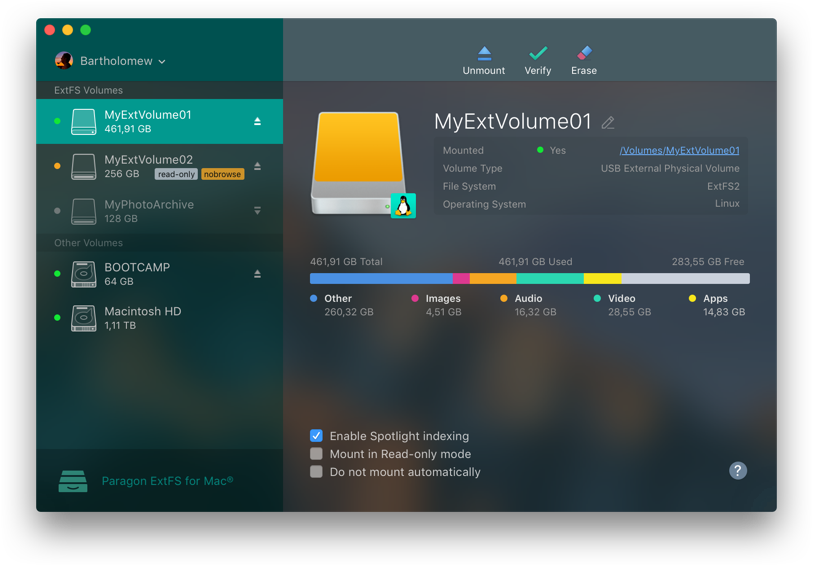Ext4 Mac Os Mojave
What is macFUSE?
Option boot your Mac and select the orange icon labeled 'EFI'. Once you reach the Knoppix desktop, click on the file explorer icon which looks like a file cabinet located near the 'Start' menu on the taskbar. You can mount the external drive by clicking on partitions on the left pane of the file explorer until you find the one with the data.
macFUSE allows you to extend macOS's native file handling capabilities via third-party file systems.
Features
- Set the format for the Linux partition as ext4 like normal, and the format for the Mac OS side as fat32. The FAT32 is necessary for the Mac OS side for doing the Mac OS install. When installing Mac OS later, disk utility will not recognize an ext4 partition and will not let you select it for reformatting.
- Apple has released Security Update 2020-001 for macOS 10.15 Catalina and Security Update 2020-007 for 10.14 Mojave to patch 46 security vulnerabilities in the older operating systems with concerns ranging from arbitrary code execution to unexpected system termination.
- How to Mount EXT4 Linux File Systems on a Mac with OS X Fuse Mar 20, 2014 - 27 Comments The EXT file system (short for Extended File System) and it’s family members of EXT2, EXT3, and EXT4, are the file systems used by Linux and Raspberry Pi.

As a user, installing the macFUSE software package will let you use any third-party FUSE file system. Legacy MacFUSE file systems are supported through the optional MacFUSE compatibility layer.
As a developer, you can use the FUSE SDK to write numerous types of new file systems as regular user space programs. The content of these file systems can come from anywhere: from the local disk, from across the network, from memory, or any other combination of sources. Writing a file system using FUSE is orders of magnitude easier and quicker than the traditional approach of writing in-kernel file systems. Since FUSE file systems are regular applications (as opposed to kernel extensions), you have just as much flexibility and choice in programming tools, debuggers, and libraries as you have if you were developing standard macOS applications.
How It Works
In more technical terms, FUSE implements a mechanism that makes it possible to implement a fully functional file system in a user-space program on macOS. It provides multiple APIs, one of which is a superset of the FUSE API (file system in user space) that originated on Linux. Therefore, many existing FUSE file systems become readily usable on macOS.
The macFUSE software consists of a kernel extension and various user space libraries and tools. It comes with C-based and Objective-C-based SDKs. If you prefer another language (say, Python or Java), you should be able to create file systems in those languages after you install the relevant language bindings yourself.
Format Ext4 Mac
The filesystems repository contains source code for several exciting and useful file systems for you to browse, compile, and build upon, such as sshfs, procfs, AccessibilityFS, GrabFS, LoopbackFS, SpotlightFS, and YouTubeFS.